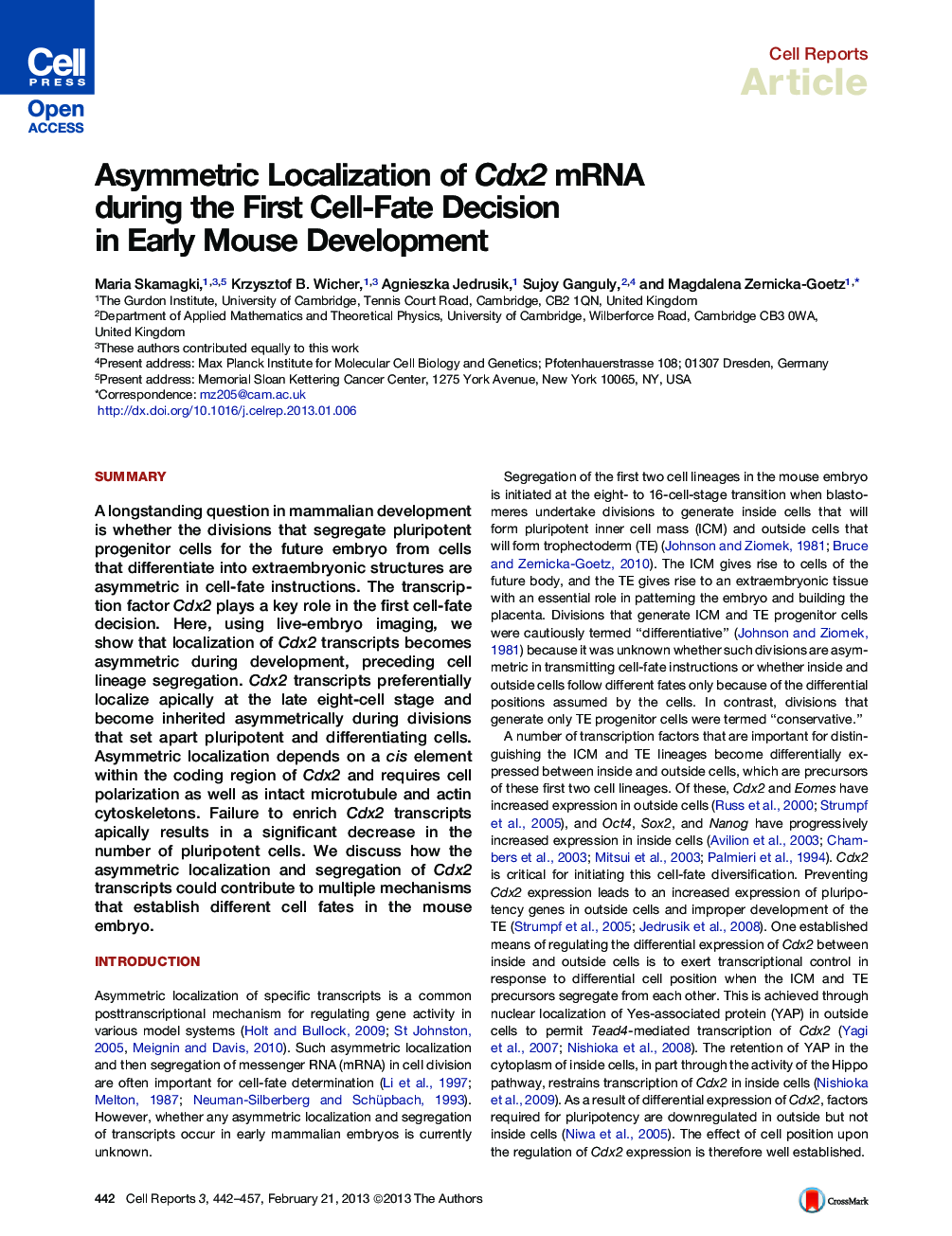| Article ID | Journal | Published Year | Pages | File Type |
|---|---|---|---|---|
| 2042185 | Cell Reports | 2013 | 16 Pages |
SummaryA longstanding question in mammalian development is whether the divisions that segregate pluripotent progenitor cells for the future embryo from cells that differentiate into extraembryonic structures are asymmetric in cell-fate instructions. The transcription factor Cdx2 plays a key role in the first cell-fate decision. Here, using live-embryo imaging, we show that localization of Cdx2 transcripts becomes asymmetric during development, preceding cell lineage segregation. Cdx2 transcripts preferentially localize apically at the late eight-cell stage and become inherited asymmetrically during divisions that set apart pluripotent and differentiating cells. Asymmetric localization depends on a cis element within the coding region of Cdx2 and requires cell polarization as well as intact microtubule and actin cytoskeletons. Failure to enrich Cdx2 transcripts apically results in a significant decrease in the number of pluripotent cells. We discuss how the asymmetric localization and segregation of Cdx2 transcripts could contribute to multiple mechanisms that establish different cell fates in the mouse embryo.
Graphical AbstractFigure optionsDownload full-size imageDownload as PowerPoint slideHighlights► Cdx2 mRNA localizes apically upon embryo compaction at the eight-cell stage ► Cdx2 mRNA is inherited asymmetrically during asymmetric divisions ► Localization requires cell polarization and intact cytoskeletal components ► Mislocalization of Cdx2 mRNA decreases the number of pluripotent cells
